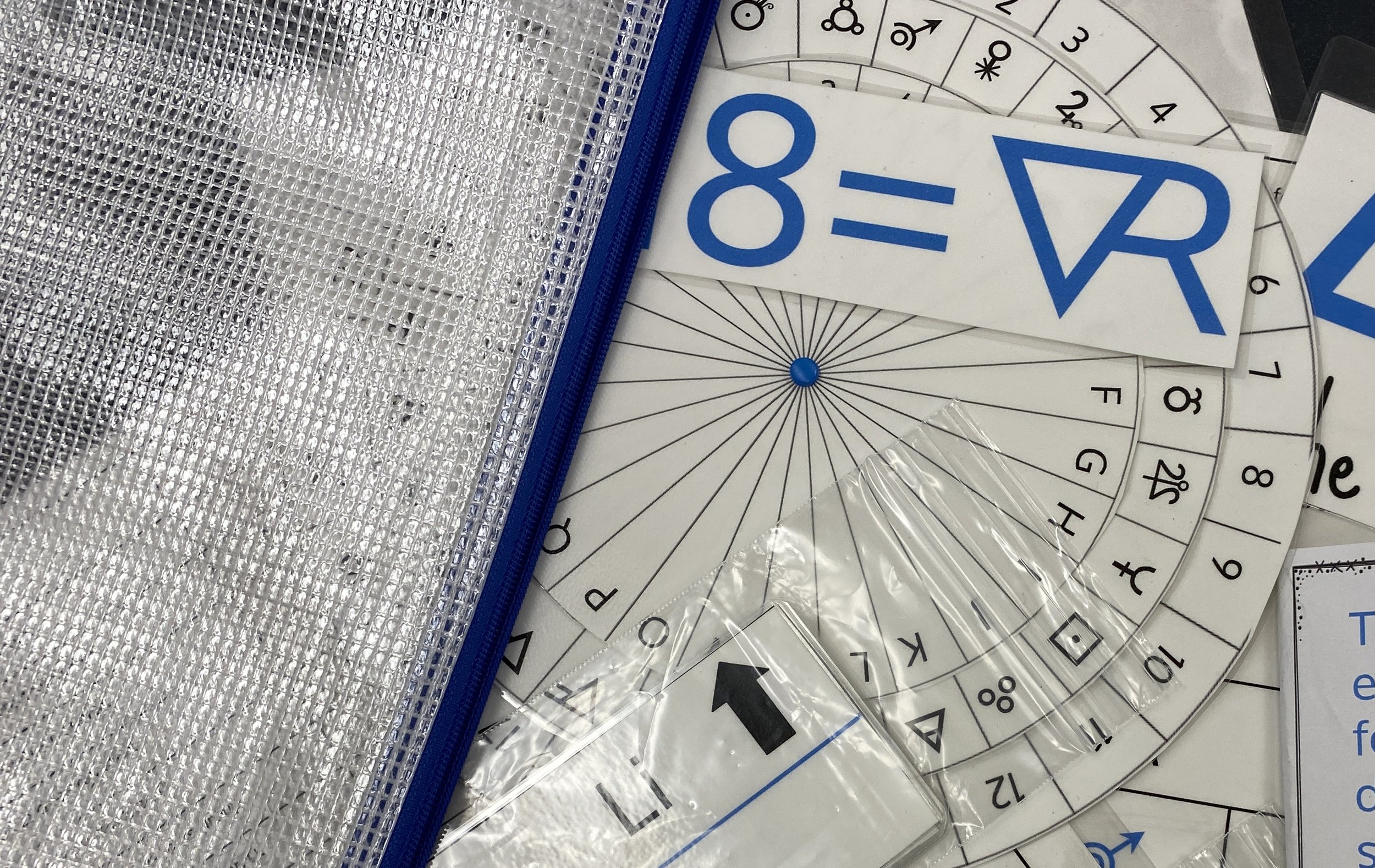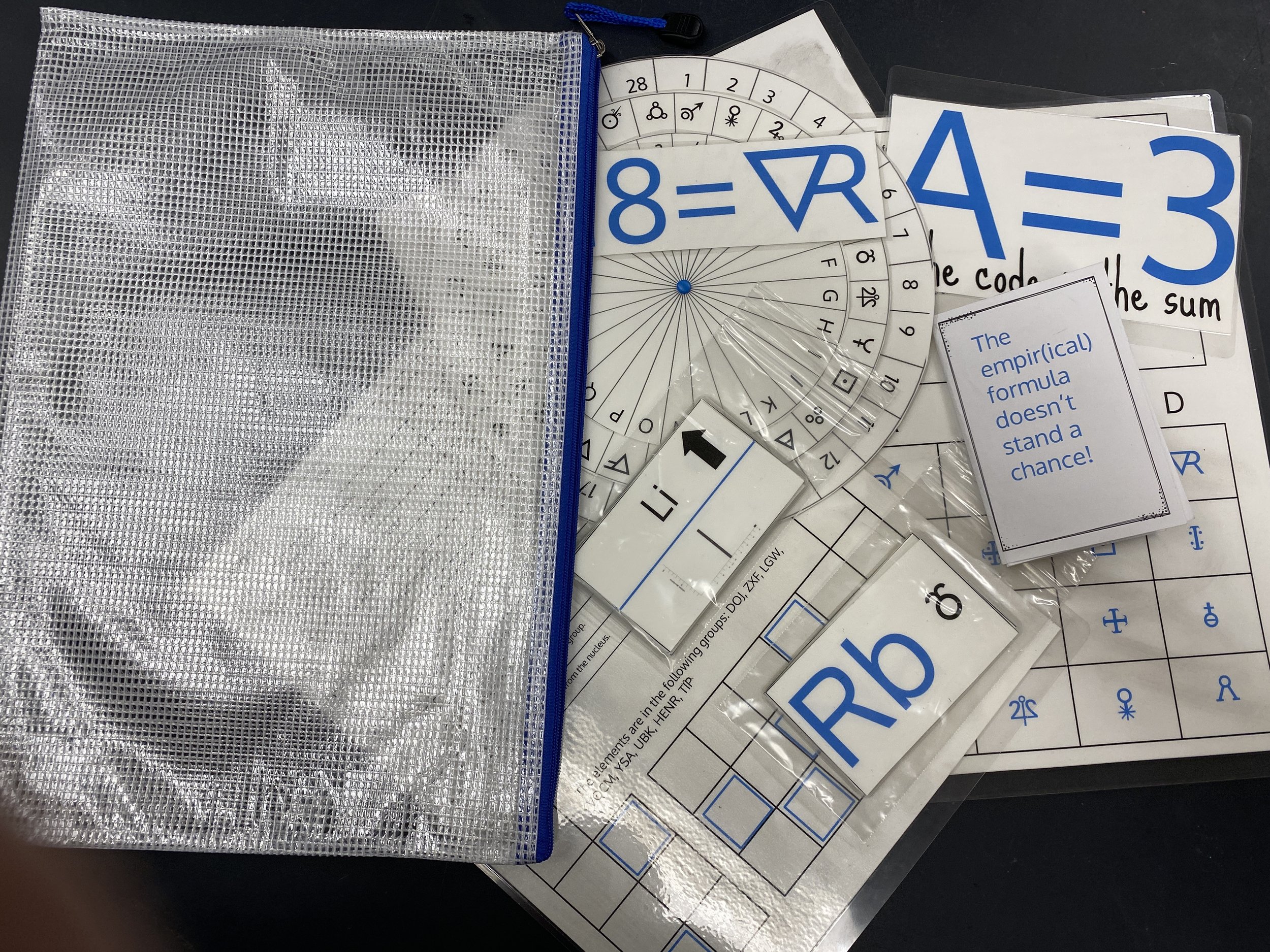12 Chemistry Escape Room Puzzle Ideas
Disclaimer-Many of the links in this post are affiliate links. This means I will make a small commission if you purchase something using my links, but it is at no cost to you.
Do you use escape rooms in your chemistry classes? Have you always wanted to try escape rooms, but weren’t sure where to start generating puzzles and clues? If either of these is the case, this post is for you! In this post, I am going to mention of the puzzles and clues I have utilized in my high school chemistry escape rooms. These puzzles and clues are great for breakout boxes, and I have included 12 of them in this post. These puzzles and clues are great for chemistry conceptual content. as well as mathematical chemistry content. If you’re interested in chemistry escape room puzzles and clues, read on for 12 puzzle ideas that you could implement with your chemistry breakouts.
Jigsaw Puzzles
Create a jigsaw puzzle for students to assemble. Once assembled, students can interpret the clue. In this clue, students have to find the atomic number, the number of protons, and the other information indicated in the bottom right of the puzzle. The top corner has a clue that says “the answer lies in the sum.” In this case, the answer is a number for a number lock. You could also use jigsaw puzzles for directional locks or word locks.
Vocab Squares
Create a vocab square to highlight vocabulary and other conceptual content. Students arrange the pieces so that the term and definition line up on an edge. In this particular vocab square, a directional lock code is revealed once all of the pieces are arranged correctly.
Teacher Tip! Indicate a top corner so students know what corner is up. I have found that it is also helpful to tell students the size of the square (in this case 4x4) so they focus on making a square.
Chemistry Math Puzzles
The puzzles I struggle to make the most usually coincide with content that contains mathematical operations. If I am using an escape room for review before a test, I want students to be able to practice those math-type problems. One of the ways I have found to do this is with clues similar to those pictured to the left and below. The problems are provided with a number (e.x. 1, 2, and 3 in the image to the left). This hints to the order students should complete the problems in. Once students complete the problem, they locate the answer on one of the colored squares. They then translate that color to a color-number key/code that is provided. For example, if the answer is the dark red, they find the dark red on the key/code, and find the number that corresponds.
See the images below for some other variations of this puzzle.
Empirical Formula Booklet
Equilibrium Problems
Math Puzzle Bubbles
Another option for math puzzles are these bubble puzzles. One sheet contains the math problems and the bubbles underneath the problem have possible answers. Students complete the problems and find the answer in one of the bubbles. On the second sheet, they find that bubble’s position-that bubble on sheet 2 will have a number. Once all 4 problems are solved, students will have 4 numbers for a 4-digit lock.
Mirrored Text
Create a clue for students using mirrored text. Microsoft Word has the capability to mirror text. Or you can use Word Art in Google, and flip the word art horizontally to make the mirrored text. Use this clue to have students perform some other task. For example, this one says “sort the reactions into the four categories. Count how many alpha, beta, positron, and fusion are in each category.”
Students can read mirrored text by using the camera on their phone, using a mirror, holding it up to a light source, etc.
Card Sorts
Use card sorts for students to practice chemistry content. In the example to the right, there are four categories:
beta decay
alpha decay
positron emission
fusion
The students complete the decay problems and then sort them into these categories. A mirrored image instructed students to count the number of cards in each category, which would provide the numbers for a 4-digit lock.
Rebus Code
Generate a rebus code to give students instructions for a puzzle. You can find a rebus generator here. This code says “find the average atomic mass of element X and report it to two decimal places.” The information for Element X is provided on a separate sheet. Rebus codes are good for providing directions for other clues.
Teacher Tip! Try to have students figure out how to decode these messages on their own first. If it’s been a while, you can start to give hints to help students figure out how to decode the message.
Periodic Table Puzzle
This is a great puzzle to use with a unit with periodic trends. After filling out the puzzle, students find the boxes that are highlighted. The students use the clue “A=3” and a cipher wheel to translate the letters in each box to a number. The code also says “the code is the sum,” and students will simply add up all the numbers from the highlighted boxes.
Cipher Wheels
Use cipher wheels to decode messages or clues. You can write a message in code, and have students use the cipher wheel to decode the message. You can also take a code from a puzzle and translate those codes to numbers so that the numbers can be used in a number lock.
Ordering Puzzles
Ordering puzzles are great for chemistry. For this particular puzzle, students had another clue (in a rebus code) that instructed students to put the elements in order of increasing atomic radius. Once they had the elements in order, they used a cipher wheel to translate the alchemy symbols to a number, which they used in a 4-digit number lock.
Dominoes Puzzles
Use dominoes as a puzzle in an escape room. These make great directional puzzles for directional locks. Once all the clues and answers are in the correct order, a directional code is revealed, and students can enter the directions into a directional lock.
Multiple Choice Grids
If you have content that better suits multiple choice, you can include those types of problems in an escape room as well. In this type of puzzle, students answer the multiple choice questions. For example, maybe question one has an answer of “A.” Students then go to the Q1 row and find the number, letter, or symbol under answer choice “A.” In this particular puzzle, I used alchemy symbols, which were included on a cipher wheel for students to translate to a letter. In the end, students find a 4-letter word to unlock a word lock.
Escape Room Puzzle Storage
In my classroom, I have 6 boxes for breakout/escape rooms, so that I can have 6 separate teams. Those 6 teams all have their own clues. I initially stored puzzles in those letter-sized manila envelopes. But the clasps would break and they just weren’t holding up well. So I have transitioned to these mesh zipper pouches. They are much more durable. You can even get them in different colors, which works great for my 6 teams (red, orange, yellow, green, blue, and purple).
Thanks for reading! I hope these puzzle and clue ideas spark some new ideas for escape room puzzles in your classroom. If you do not have time to make your own, check out my Escape Rooms available in my TPT store.
Affiliate Links.
Disclaimer-I make a small commission if you use these links to purchase an item at no cost to you.






















